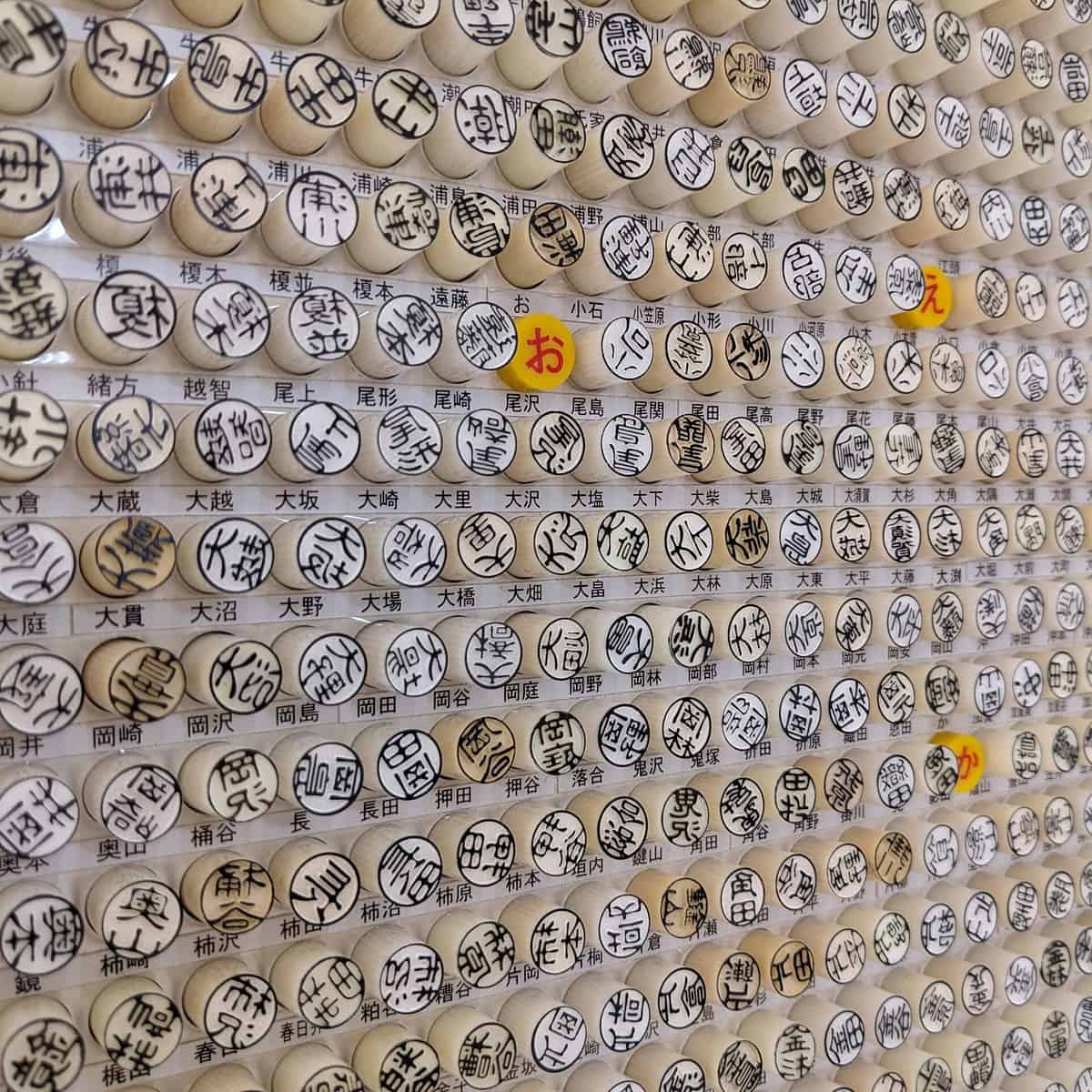Konnichiwa! Today, let’s explore Japanese signatures. Imagine signing an important document without using a pen or a fancy signature. In Japan, they have been doing it differently for centuries! Traditionally, Japanese signatures are made using a personal seal known as a “hanko” or “inkan.” These signature stamps are carved with intricate designs and characters, often using a material called “shachihata” or “stone.”
The Art of Seal Carving
In Japan, seal carving is considered a respected art form. Skilled craftsmen called “tenkoku-shi” dedicate themselves to creating personalized hanko stamps. These craftsmen meticulously carve the stamps by hand, using a variety of materials such as wood, ivory, or even precious stones. Each stamp is unique and reflects the owner’s identity.
A History Etched in Ink
The use of personal seals dates back over 1,000 years in Japan. The earliest evidence of seals can be traced to the 8th century when they were used by the Imperial Court. Initially, these seals were used by nobles and samurais to mark important documents. Over time, their use spread to merchants, artists, and common people.
The Modern Era
In today’s fast-paced world, where technology reigns supreme, you might wonder if traditional signature stamps have become obsolete. Surprisingly, the answer is no! Japanese people still value the authenticity and personal touch that comes with using hanko stamps. In fact, many official documents, such as contracts, legal papers, and even bank transactions, require the use of hanko seals.
The Myriad of Uses
Hanko stamps have a variety of applications beyond official documents. They are commonly used for personal letters, artwork, and even as a mark of approval on certificates. Companies also have their own hanko stamps, known as “ginkōin” or “company seals,” which are used to validate business transactions and official documents.
The Hanko Evolution
Just like everything else, hanko stamps have evolved over time. Nowadays, it is possible to create a digital version of your hanko, known as an “e-hanko.” These digital signatures are stored on a computer or a USB device and can be used for online transactions and authentication. While the e-hanko is gaining popularity, the traditional hanko still holds a special place in Japanese culture.
Tips for Creating Your Own Hanko
If you’re intrigued by the idea of having your own hanko stamp, here are a few tips to guide you:
- Choose a Material: Decide on the material you want for your hanko stamp. Common options include wood, ivory, and synthetic materials like plastic or resin.
- Select a Design: Think about the design you want for your hanko. It can be your name in kanji or a combination of kanji characters that hold personal meaning for you. You can also incorporate symbols or patterns that reflect your personality or interests. The design options are limitless!
- Find a Tenkoku-shi: Seek out a skilled tenkoku-shi who specializes in seal carving. Look for recommendations or search online for reputable craftsmen who can bring your design to life. Take your time to find someone whose style and craftsmanship align with your vision.
- Consultation: Once you’ve found a tenkoku-shi, schedule a consultation to discuss your design and preferences. They will guide you through the process and offer suggestions based on their expertise. Don’t be afraid to ask questions and provide feedback to ensure your hanko is exactly as you envision it.
- Carving Process: The tenkoku-shi will begin the intricate process of carving your hanko. This may take some time, as they meticulously carve the design into the chosen material. The craftsmanship and attention to detail that goes into creating a hanko are truly awe-inspiring.
- Personalize it: Once your hanko is carved, you can further personalize it by adding color or lacquer. Some people even choose to have their hanko engraved with their family crest or a special symbol that represents their heritage.
- Seal Your Documents: Now that you have your own unique hanko stamp, you can start using it to sign your documents. Remember to use the appropriate ink pad, usually made of red ink, as it symbolizes the official and traditional nature of the signature.
Summary
In a world where signatures are often hastily scribbled or replaced by digital clicks, the Japanese approach to signing documents with hanko stamps is a charming reminder of tradition and individuality. The artistry of tenkoku-shi and the personal touch of a hand-carved hanko stamp are deeply ingrained in Japanese culture, providing a tangible connection to the past.
So, the next time you find yourself signing a document, think about the fascinating history behind Japanese signature stamps. Consider the craftsmanship and personalization that goes into creating a hanko, and maybe even consider getting one for yourself. Let your signature become a unique work of art, a symbol of your identity, and a nod to the rich cultural heritage of Japan.
Sayōnara for now, dear readers! May your journeys be filled with stamps of approval and the joy of embracing traditions from around the world.

